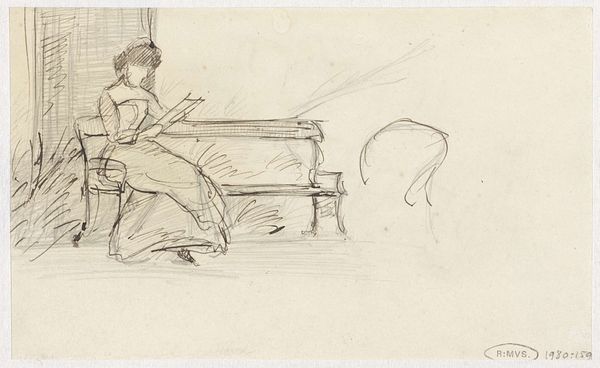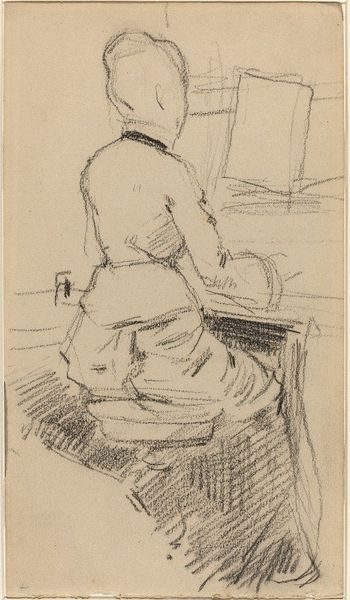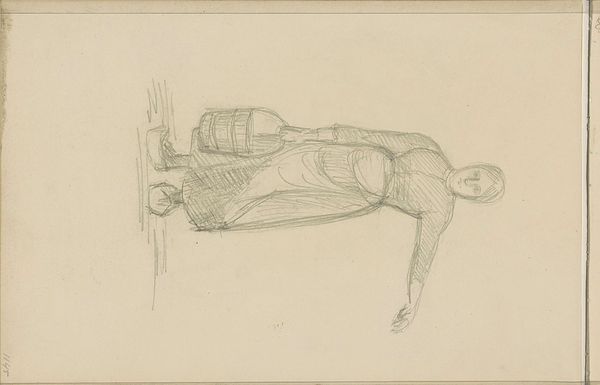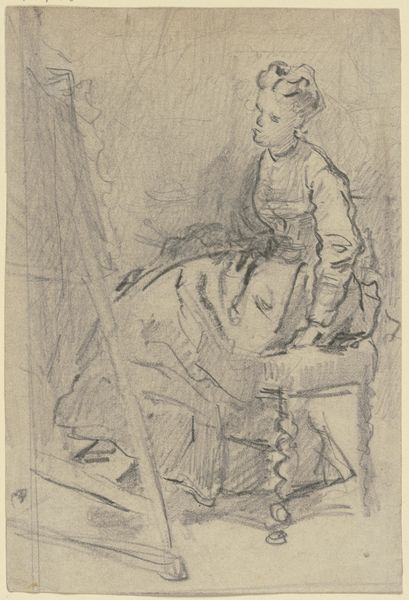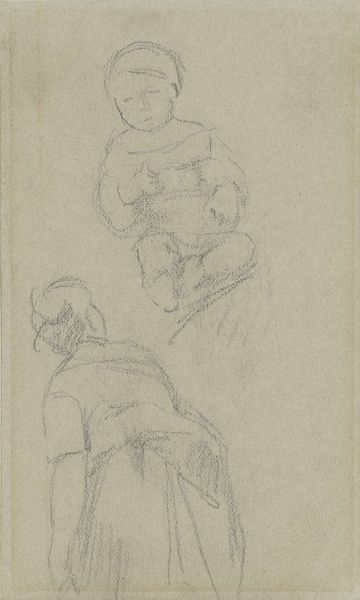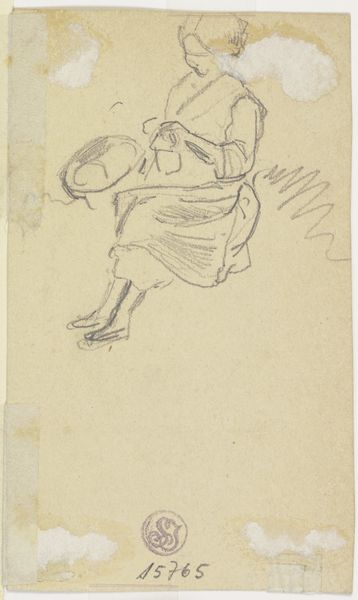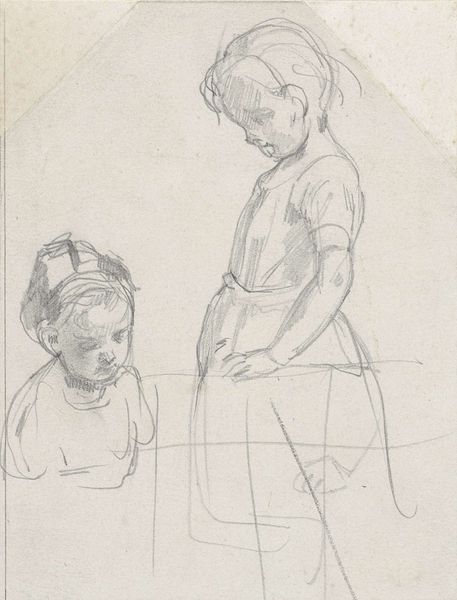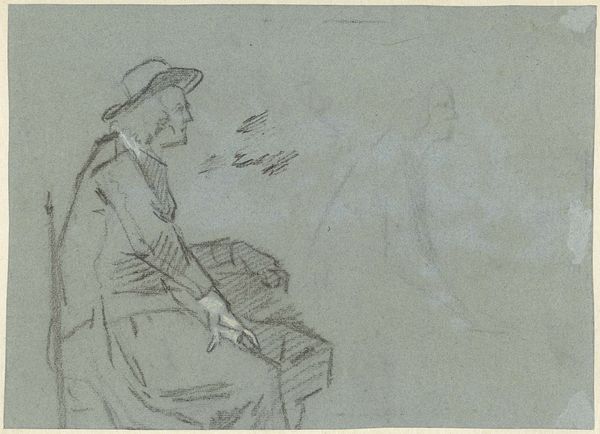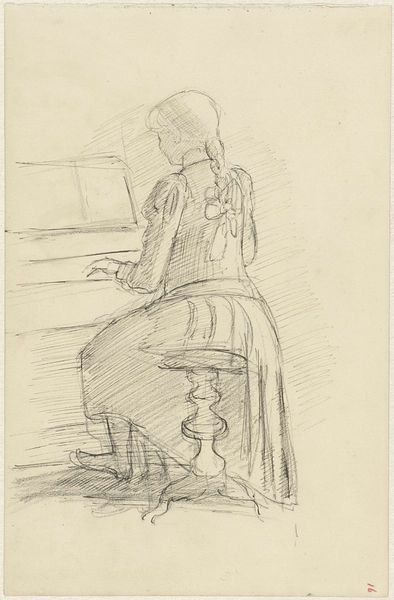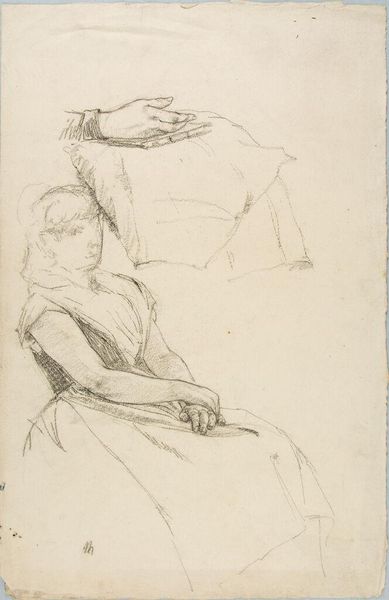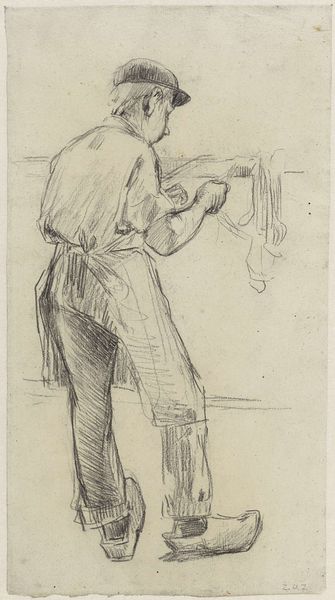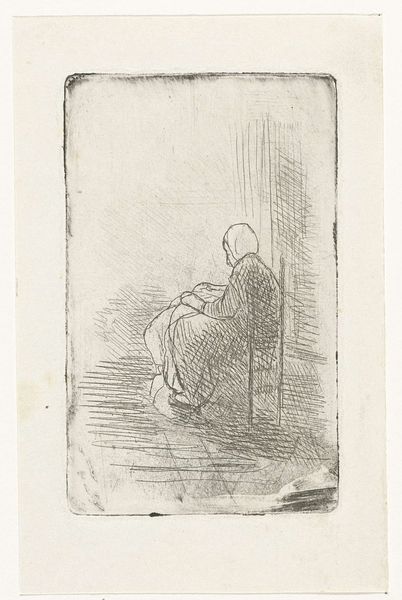
drawing, paper, pencil
#
portrait
#
drawing
#
light pencil work
#
quirky sketch
#
impressionism
#
pencil sketch
#
paper
#
personal sketchbook
#
idea generation sketch
#
ink drawing experimentation
#
pencil
#
sketchbook drawing
#
genre-painting
#
storyboard and sketchbook work
#
sketchbook art
#
realism
#
initial sketch
Dimensions: height 290 mm, width 190 mm
Copyright: Rijks Museum: Open Domain
Editor: We're looking at "Pianospelende vrouw en een paard," or "Woman Playing Piano and a Horse," a pencil drawing on paper by Jozef Israëls, dating from 1834 to 1911. The composition is a bit unusual; the woman at the piano seems grounded, while the horse above her appears almost dreamlike. What strikes you most about this piece? Curator: The juxtaposition is definitely intriguing. Israëls, known for his depictions of working-class life and the struggles of the common person, created this light, somewhat ephemeral sketch. But what’s compelling is considering what placing these images together may represent from a cultural context. We need to remember Israëls worked within a rapidly changing industrialized world. Editor: So, how might this relate to societal shifts? Curator: Well, think about it: the piano, a symbol of domesticity and bourgeois comfort, juxtaposed with the horse, a traditional mode of transport and labor increasingly replaced by machines. It could be read as a commentary on the evolving roles of women and the fading presence of agrarian life within urban spaces. The sketch, rather than a highly polished painting, brings intimacy to these broad changes. Does it resonate that way with you? Editor: I didn’t initially see it as commentary, but that makes sense. It feels more poignant now, recognizing that contrast. Curator: And remember, museums themselves play a role here. Pieces like this, originally sketchbook explorations, gain new meaning and visibility when placed in public collections like the Rijksmuseum. They become artifacts, evidence of artistic and social thought. Editor: That’s fascinating. It highlights how our perspective shifts depending on where and how we encounter art. Curator: Precisely! Israëls, this work, the Rijksmuseum – it’s all interconnected in telling a cultural narrative. Understanding these connections opens up how we receive art, moving away from simply enjoying pretty paintings. Editor: I appreciate that – I’ll definitely look at art differently now. Thank you.
Comments
No comments
Be the first to comment and join the conversation on the ultimate creative platform.
